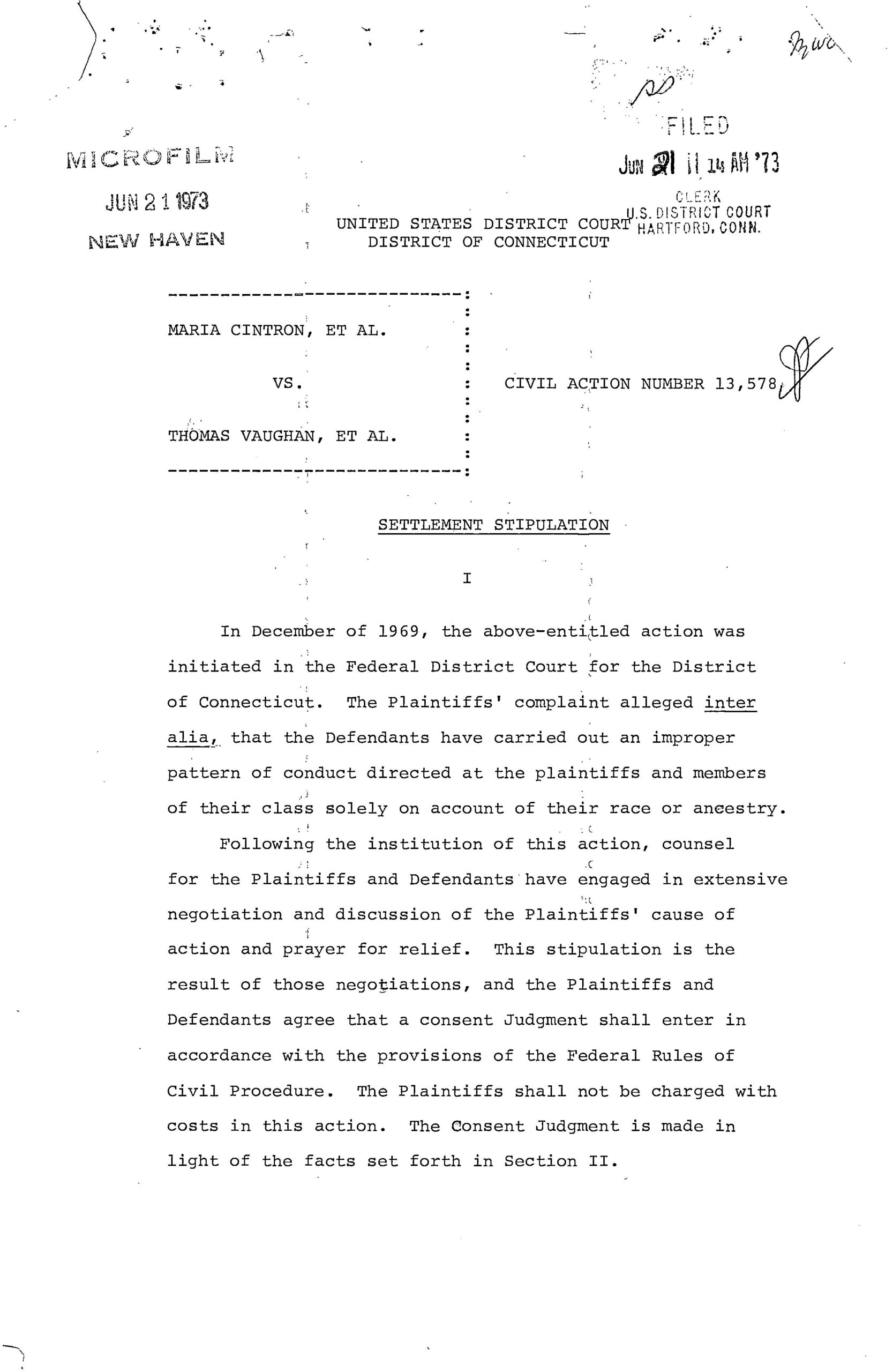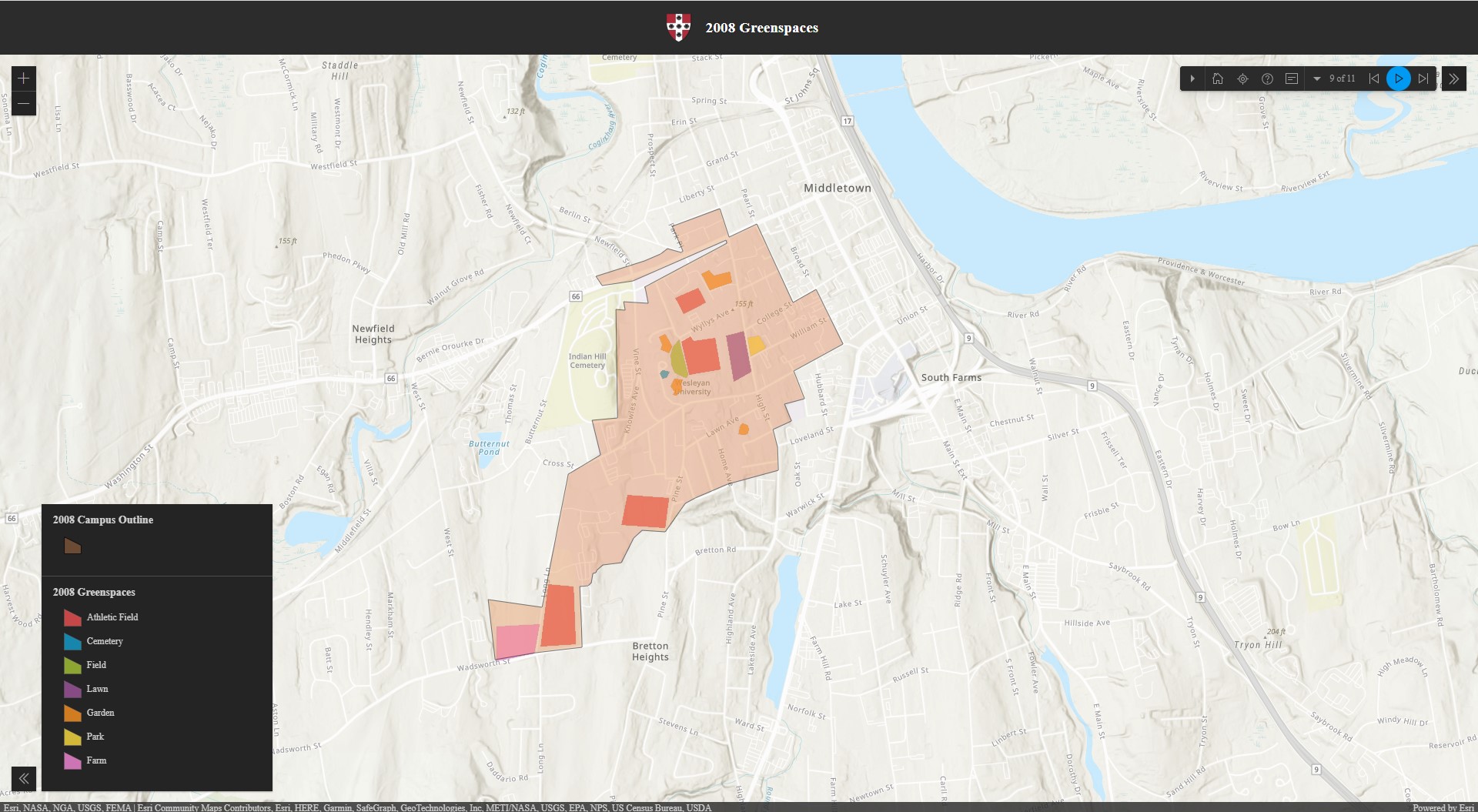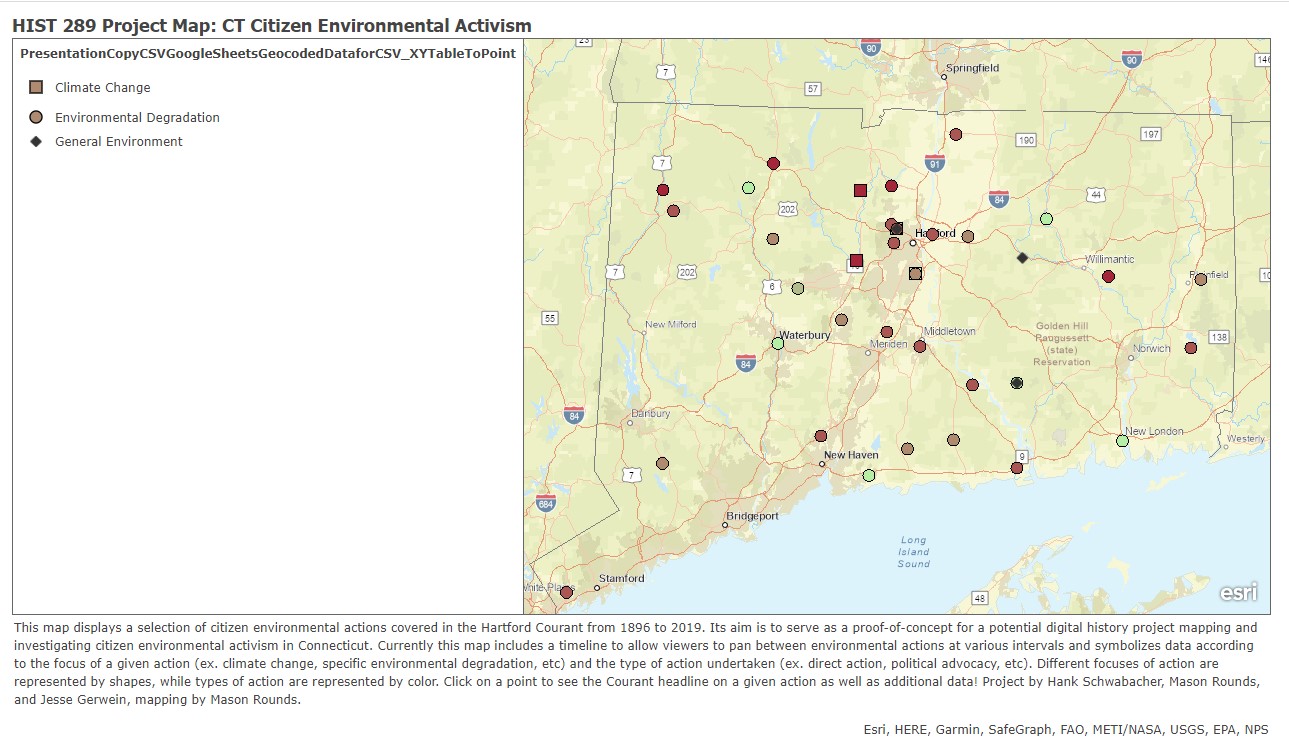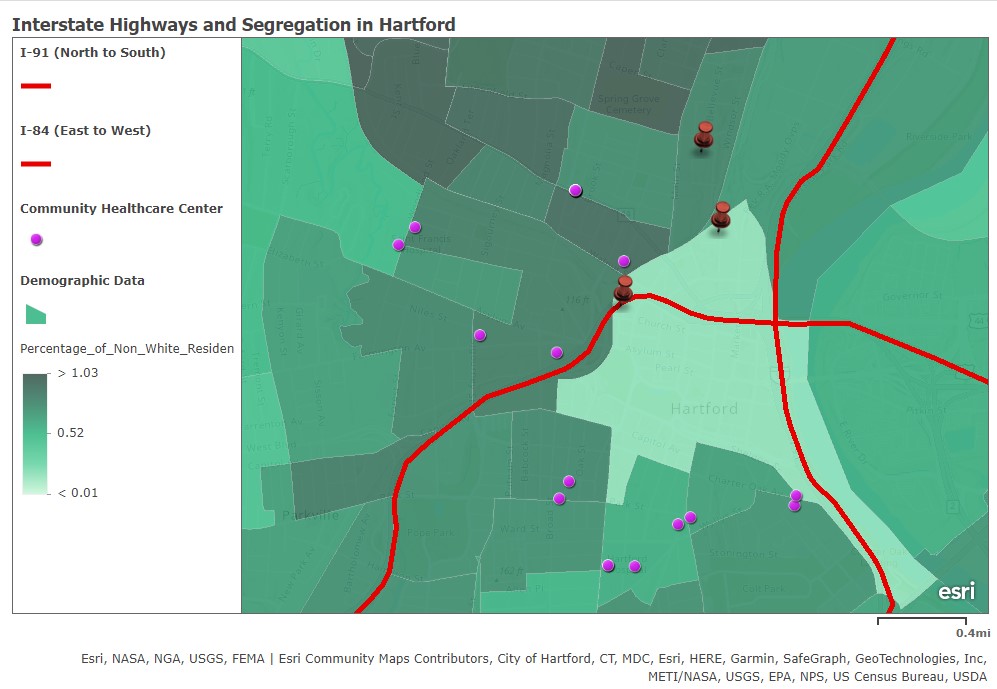For our final project, we created a map of the history of climate action in Connecticut. By mapping Connecticut's activism, we sought to place isolated events into the larger picture of the environmental movement. Connecticut residents may feel like their local environmental struggles are unique to their area, when in fact they are part of a larger pattern of activism in the state as a whole. By showing the scale and frequency of individual protests, our map seeks to encourage support for wide-reaching, holistic climate action and legislation, while also staying attentive to the local contexts of environmental actions. Digital mapping projects provide unique opportunities to engage with hyperlocal practices while simultaneously remaining aware of patterns of action, as described in critical digital projects like HyperCities. The map also aims to place Connecticut's activism within the larger pattern of the national environmental movement, its history, and its future direction. Our map serves as an educational resource about the environmental movement, illustrating the conceptual and practical shifts in the movement’s focus from conservation to environmentalism to climate activism. By visualizing the dynamics of previous movements, it also serves as an aid for inspecting the successes and failures of past actions, helping contemporary activists strategize for the future.





